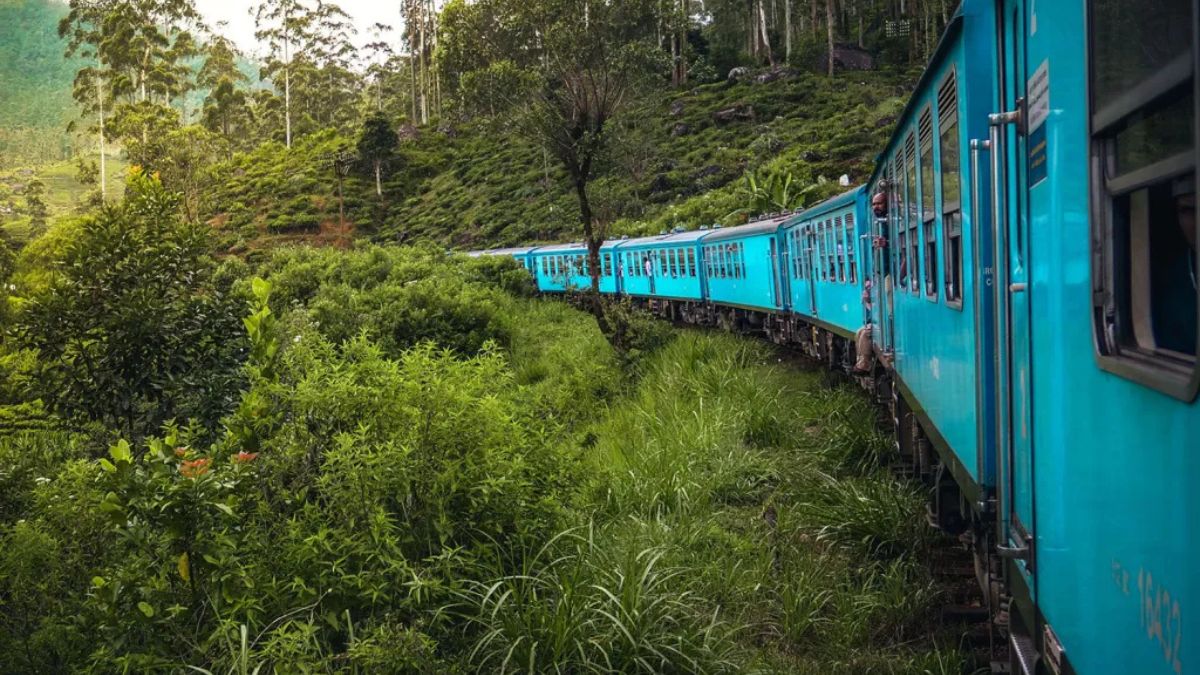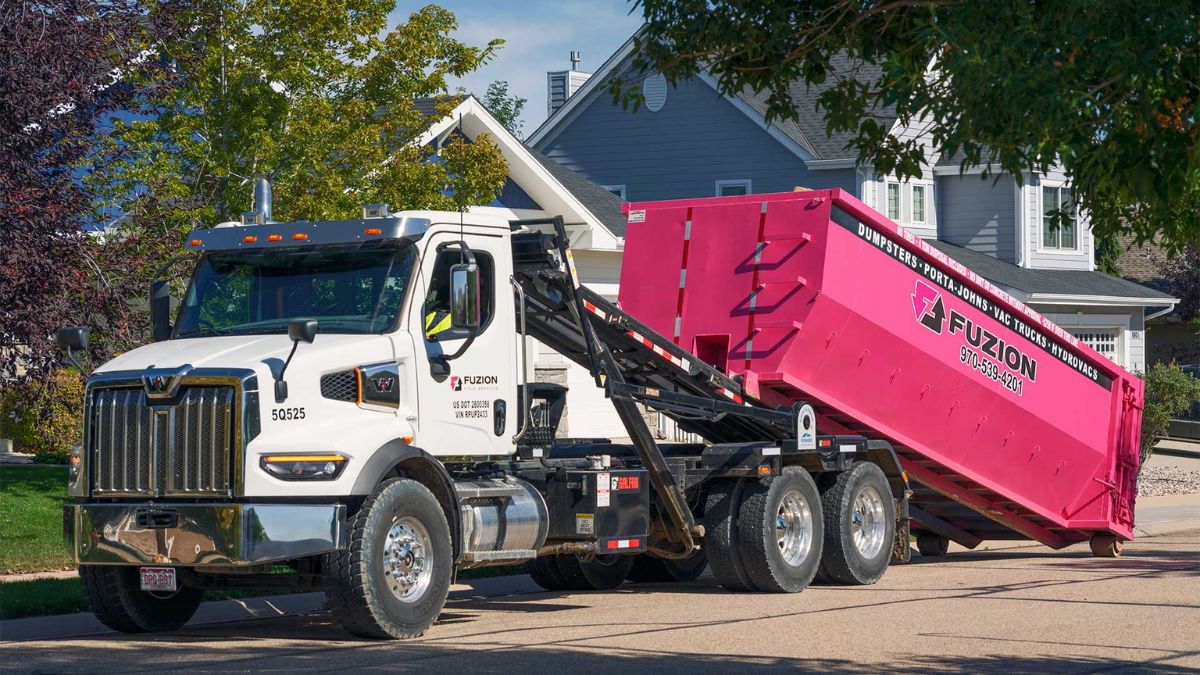TOPIC
10 Days in Sri Lanka Itinerary: A Perfect for Nature and Culture Lovers

Sri Lanka, often referred to as the “Pearl of the Indian Ocean,” is a treasure trove of natural beauty and rich cultural heritage. With its stunning landscapes, ancient cities, and vibrant traditions, this island nation offers an unforgettable experience for travelers seeking adventure and insight. Whether you’re wandering through lush tea plantations or marveling at breathtaking rock fortresses, every corner reveals a story waiting to be discovered.
Planning your journey can feel overwhelming with so much to explore. That’s why we’ve crafted a 10-day Sri Lanka itinerary specifically designed for nature lovers and culture enthusiasts alike. From bustling city streets filled with local flavors to serene hilltops overlooking rolling hills, each day promises unique experiences that will leave you enchanted by this beautiful land.
So pack your bags! Your incredible Sri Lankan adventure awaits just around the corner.
Day 1: Arriving in Colombo
Colombo, the vibrant capital of Sri Lanka, welcomes you with open arms. As soon as you arrive, the energy is palpable. The blend of old-world charm and modernity is captivating.
Start your day by wandering through the city’s colonial heritage. Visit landmarks like the Old Parliament Building and Fort district that echo stories from a bygone era. Each street corner reveals a piece of history waiting to be discovered.
Don’t miss out on local street food! Savor kottu roti or hoppers from bustling stalls. The flavors are bold and authentic—an experience that dances on your taste buds.
As evening approaches, stroll along Galle Face Green where locals gather to enjoy sunset views over the Indian Ocean. It’s an ideal spot to unwind after a long journey while soaking in Sri Lanka’s lively atmosphere.
– Exploring the city’s colonial heritage
Colombo, the vibrant capital of Sri Lanka, is a tapestry woven with colonial history. As you stroll through its streets, remnants of British, Portuguese, and Dutch architecture greet you at every corner.
The iconic Galle Face Green invites visitors to unwind against the backdrop of an azure ocean while enjoying colonial-era buildings like the Old Parliament and the majestic Lighthouse at Point de Galle. Each structure tells a story of bygone eras.
Wander into Fort Colombo for striking examples of Victorian design juxtaposed with modern skyscrapers. The contrast highlights how this city embraces its past while forging ahead into contemporary life.
Don’t miss visiting the National Museum; it’s packed with artifacts that date back centuries. This cultural gem provides deeper insights into Sri Lankan heritage influenced by colonization.
Exploring these sites unravels layers of history that shape today’s Colombo, making each step feel like a journey back in time.
– Trying local street food
Sri Lanka’s street food scene is a vibrant tapestry of flavors. As you wander through Colombo, your senses will be awakened by the enticing aromas wafting from roadside stalls.
Begin with kottu roti, a stir-fried dish made with chopped flatbread, vegetables, and spices. The sound of blades hitting the hot griddle creates an energetic rhythm that draws crowds.
Don’t miss out on hoppers—thin pancakes made from fermented rice flour. They’re often served with a runny egg in the center or sweetened coconut milk for breakfast.
For something spicy, try samosas filled with potatoes and lentils. These crispy delights pack a punch and are perfect for snacking while exploring.
Wash it all down with king coconut water; its refreshing taste is both hydrating and delicious after wandering under the sun. Each bite tells a story rich in tradition and culture.
Day 2: Sigiriya
Day 2 in Sri Lanka takes you to the breathtaking Sigiriya. Known for its towering rock fortress, Sigiriya is a UNESCO World Heritage site that offers stunning views and rich history.
Start your day early to beat the heat as you ascend the 1,200 steps leading up to Lion’s Rock. The climb is rewarding; each step reveals ancient frescoes and mirror walls reflecting centuries of artistry. As you reach the summit, be prepared for panoramic vistas that will take your breath away.
After soaking in the sights from above, head over to Polonnaruwa. This ancient city boasts impressive ruins such as temples and stupas dating back to the 12th century. Walking among these remnants transports you back in time, offering a glimpse into Sri Lanka’s storied past.
The combination of natural beauty and cultural heritage makes this day truly unforgettable.
– Climbing the iconic rock fortress
Standing tall at 200 meters, Sigiriya Rock Fortress is a mesmerizing sight. This UNESCO World Heritage site captures the imagination of all who visit. The ancient ruins perched on top offer breathtaking views of the lush landscape below.
The climb to the summit requires some effort but rewards you with an extraordinary panorama. As you ascend, you’ll encounter fascinating frescoes and mirror walls that speak volumes about Sri Lanka’s rich history.
Each step reveals snippets of stories from centuries past. Take your time to absorb every detail as you navigate narrow staircases and steep paths.
Reaching the top feels like stepping into another world. The remnants of King Kashyapa’s palace greet you, leaving visitors in awe of human ingenuity against nature’s backdrop. Here, amidst history and stunning vistas, it’s impossible not to feel connected to both culture and earth itself.
– Visiting the ancient city of Polonnaruwa
Visiting the ancient city of Polonnaruwa is like stepping into a living history book. This UNESCO World Heritage site boasts remarkable ruins that reflect Sri Lanka’s rich past.
As you wander through its expansive grounds, you’ll encounter stunning structures such as the Royal Palace and Gal Vihara. The intricate carvings on these ancient stones tell stories of a civilization that flourished over 1,000 years ago.
Don’t miss the massive statue of Buddha carved straight from granite. Its serene expression captivates visitors and invites moments of reflection.
The lush greenery surrounding the ruins adds to the atmosphere, creating an enchanting backdrop for exploration. You might even spot local wildlife roaming freely among the remnants of this bygone era.
Polonnaruwa offers not just sights but also a deep connection to Sri Lankan heritage. Each step taken here brings you closer to understanding this island’s storied past and vibrant culture.
Day 3: Kandy
Kandy, a city steeped in history and culture, is an essential stop on your Sri Lanka itinerary. The centerpiece of Kandy is the Temple of the Tooth Relic, home to what many believe is a sacred relic of Buddha himself. A visit here offers not just spiritual insights but also breathtaking architecture.
After soaking up the spirituality, head to a nearby tea plantation. The lush green hills are mesmerizing. Here, you can witness the intricate process of tea production from leaf picking to brewing.
Engage with friendly locals who share fascinating stories about their daily lives in this vibrant community. Don’t forget to savor some freshly brewed Ceylon tea; it’s an experience that lingers long after you leave.
– Exploring the Temple of the Tooth Relic
The Temple of the Tooth Relic, or Sri Dalada Maligawa, is a must-visit site in Kandy. This sacred destination houses what Buddhists believe to be a tooth of Lord Buddha himself. The atmosphere here is serene and spiritual.
As you approach the temple, intricate architecture catches your eye. Beautiful carvings and golden embellishments tell tales of history and devotion. Inside, devotees offer prayers and lotus flowers while chanting softly—a truly moving experience.
Don’t miss the chance to witness the daily rituals that take place at noon. The sound of drums fills the air as offerings are made with great reverence.
Wandering through this hallowed space offers a glimpse into Sri Lanka’s rich cultural heritage. Each corner reveals stories etched in time—inviting visitors to reflect on faith and tradition while soaking in breathtaking surroundings.
– Visiting a tea plantation and factory
Visiting a tea plantation and factory in Kandy is like stepping into a vibrant green dream. The rolling hills, covered in lush tea bushes, create an enchanting landscape that seems almost surreal.
As you stroll through the rows of neatly trimmed plants, you’ll meet friendly local workers expertly plucking leaves. Their skill reveals the passion behind each cup of Ceylon tea.
The aroma intensifies as you enter the factory. Here, traditional methods blend with modern techniques to produce some of the finest teas in the world. Watch as fresh leaves are dried and processed before your eyes.
Don’t miss out on sampling different varieties straight from the source. Each sip tells a story of its origin—the unique flavors shaped by soil, climate, and careful cultivation.
This experience not only immerses you in Sri Lanka’s rich culture but also highlights its significance as one of the leading producers of tea globally.
Day 4: Ella
Day four takes you to the enchanting hills of Ella. This small town, surrounded by lush greenery and tea plantations, is a haven for nature lovers.
Start your day with a hike up Little Adam’s Peak. The trail is relatively easy and rewards you with breathtaking views over the valleys below. Keep your camera ready; every angle offers something unique.
Next, visit the Nine Arches Bridge, an architectural marvel set against vibrant landscapes. Snap some pictures as trains rumble across this iconic structure—it’s truly a sight to behold.
In the afternoon, wander through local tea estates. Here, you’ll learn about Sri Lanka’s famous Ceylon tea production process while sipping on fresh brews that delight the senses.
As dusk approaches, find a cozy café where you can unwind and soak in Ella’s tranquil atmosphere before heading back to rest for another adventure ahead.
Conclusion : Sri Lanka Itinerary
This 10-day Sri Lanka itinerary offers a perfect blend of nature and culture. Each destination reveals a unique aspect of the island’s rich heritage and stunning landscapes. From Colombo’s bustling streets to the breathtaking views from Ella, every stop invites exploration.
As you journey through this beautiful country, immerse yourself in its traditions, savor local cuisine, and connect with warm-hearted locals. Whether you are climbing Sigiriya Rock or sipping tea in Kandy, each experience leaves lasting memories.
Embrace the vibrant colors, sounds, and flavors of Sri Lanka as you travel through its diverse regions. This itinerary not only showcases iconic landmarks but also encourages moments of reflection amidst nature’s beauty. Prepare for an adventure that nourishes both your soul and your sense of wonder!
TOPIC
Staying Safe at Home: Simple Strategies for Everyday Security

Why Home Security Matters
Feeling safe at home is foundational for comfort and well-being, yet many people underestimate the risks and consequences of a break-in. Residential burglaries persist at troubling rates in the United States. These incidents impact not just property, but can cause lingering emotional distress. Having a security plan in place goes beyond protecting possessions—it supports a sense of control and safety for everyone under your roof. Many homeowners discover, sometimes too late, that prevention is far easier than recovery.
Advancements in protective measures have led to reliable, accessible options for every household and budget. From advanced deadbolts to neighborhood engagement, security has become a truly holistic pursuit. In this evolving landscape, tools like electronic access control systems Orlando are gaining popularity, offering enhanced convenience and control over who accesses a property. While high-tech options are growing, simple steps—like locking every entry and knowing your neighbors—still matter the most. Modern safety is about proactively combining strategy, technology, and daily vigilance.
Types of Everyday Security Risks
Home security threats often stem from ordinary and preventable oversights. Many break-ins are opportunistic, carried out because entry was quick and easy. Leaving an exterior door unlocked while gardening, a window cracked open for fresh air, or a garage door forgotten at night all serve as open invitations. Additionally, hiding spare keys under mats or fake rocks is a common practice that burglars are well aware of. Outdoor spaces deserve careful attention; ladders left near fences or dense shrubs obscuring windows provide cover for trespassers and easy access points.
- Unlocked entry points, such as doors and windows, even during daylight
- Outdated or improperly installed locks that are easy to bypass
- Keys stashed outside in common hiding spots
- Dim or poorly placed exterior lighting that allows movement to go unseen
- Sharing detailed vacation, work, or travel plans on public social media
Acknowledging these common slip-ups is the first step toward meaningful protection. Our routines often make us blind to what an intruder might see—remaining aware of these subtle weaknesses is vital in deterring criminal activity long before it occurs.
Easy Ways to Improve Security
Adequate security begins with practical, low-cost habits that make a home far less attractive to would-be intruders. Performing a regular sweep to check locks on doors and windows is often overlooked, yet remains one of the most potent defenses. Deadbolts and hardware upgrades offer noticeable improvement, especially when installed to fortify key entry points such as main doors and garage accesses. Preventative upkeep like repairing loose strikes, reinforcing door frames, and ensuring windows latch securely makes each layer harder to breach. According to Reader’s Digest’s home security tips, even simple actions such as leaving lights on timers or trimming overgrown bushes can significantly reduce a home’s vulnerability.
- Lock all entry points thoroughly, even for quick errands or time in the yard.
- Upgrade any doors and locks that feel wobbly, light, or outdated.
- Install rods or bars to block sliding doors and ground-level windows.
- Set up motion-activated lights along walkways and near entrances to deter intruders at night.
- Reach out to neighbors for mutual watchfulness. A trusted local network enhances awareness and response times in the event of suspicious activity.
Making these adjustments part of the daily routine pays off—unlocked side gates, open upstairs windows, and hidden keys are among the most frequent and preventable risks. Adding just a few new habits can significantly reduce the likelihood of an unwanted incident.
Technology and Home Safety
Home technology has evolved rapidly in recent years, delivering smart solutions that are both affordable and user-friendly. Devices such as wireless cameras, remote-activated locks, and doorbell video systems allow real-time monitoring from a smartphone, increasing awareness and quick response options. Notifications can alert homeowners to movement or attempted entries even when they are miles away. In neighborhoods with regular delivery traffic, video doorbells offer valuable evidence in the event of package theft or vandalism.
Balancing High-Tech and Traditional Security
Modern gadgets are fantastic, but cannot entirely replace sound habits. Power or internet outages can affect wireless devices; having physical barriers and trusted routines in place is an essential backup. Many of the most secure households rely on a playoff between new tech and “old school” caution, ensuring that if one measure fails, another stands in its place. Practicing situational awareness and regular manual checks remains irreplaceable.
Common Mistakes to Avoid
Getting comfortable at home is normal, but comfort often breeds carelessness. Some of the simplest mistakes leave households vulnerable: leaving out essential tools or ladders, relying on default factory settings on alarm systems, or neglecting to reset access codes after turnover in cleaning or maintenance staff. Social media escalates risk as well; broadcasting vacations or expensive purchases online provides real-time alerts to the wrong audience.
- Leaving equipment outside that could be used to reach windows or rooftop areas.
- Delaying updates for digital locks, access codes, or alarm passwords
- Storing “hidden” spare keys in easy-to-guess spots around the front porch
- Posting photos of valuables, recent buys, or personal schedules online
- Ignoring little repairs—a broken gate or a dead light bulb weakens the first line of defense
Monthly or quarterly perimeter checks are simple yet exceptionally valuable for catching these oversights. Small adjustments and a keen eye prevent these temptations from becoming invitations.
Educating Family Members
Security strengthens when everyone living in the home is on board and informed. Children, teens, and older adults require personalized guidance to stay safe. Children should never open the door for strangers, while teenagers might need reminders to lock up after coming and going. Older family members benefit from practicing with smart devices so they feel confident using alarms or notifying authorities in an emergency.
- Establish expectations for answering doors or calls—only answer if the identity is confirmed.
- Review and rehearse emergency procedures, such as fire drills or procedures for calling for help.
- Update all family members on any changes to keys, locks, or passcodes
- Keep an open dialogue so that any member feels comfortable reporting something suspicious
Open, ongoing communication not only improves preparedness but also helps loved ones feel empowered rather than anxious about security.
What to Do After a Break-In
Even with strong defenses in place, break-ins sometimes occur. The first step should always be personal safety—leave the location immediately if an intruder might still be inside, and alert local authorities right away. After the police arrive, avoid tampering with anything, as fingerprints and other evidence are crucial for the investigation. Take time to carefully list and photograph any losses, supporting both the police report and any insurance documentation. Speaking with your insurance provider promptly can also help streamline the recovery process and clarify your coverage.
- Remain calm and get everyone to a secure location
- Call 911 and do not attempt to confront intruders
- Document losses and damages for both police and insurance claims
- Upgrade and repair any points of forced entry or system vulnerabilities
- Join a local community watch to help rebuild confidence and contribute to neighborhood safety
These steps help rebuild peace of mind and can serve as a catalyst for even stronger security going forward. For many, a break-in is also a call to community, as neighbors working together often strengthen individual and shared protection.
Useful Security Checklist
- Lock all external doors, windows, and gates each night and every time you leave, even briefly
- Keep walkways and entries well-lit with motion sensor or schedule-based lighting
- Maintain trimmed bushes or trees that could obscure windows or entry points
- Maintain, check, and—if needed—upgrade locks every year
- Test alarms, video cameras, and wireless locks at least once a month
- Discuss emergency plans and where to find supplies with everyone in your home
- Build relationships with neighbors or consider starting a neighborhood security group
Consistently following this checklist reinforces your defenses, making it far more difficult for any would-be intruder to find a weakness.
Conclusion
Ultimately, home security is less about fear and more about preparation, peace of mind, and personal responsibility. While no system is entirely foolproof, a thoughtful combination of everyday habits, innovative technology, and community awareness can dramatically reduce the chances of a break-in. By staying vigilant, educating household members, and taking proactive steps—no matter how simple—they create an environment that prioritizes both safety and comfort. Ultimately, securing your home means protecting not just your possessions but the people and peace within it.
TOPIC
Innovative Waste Management Solutions: A Comprehensive Guide to Roll-Off Dumpster Rentals

Introduction to Roll-Off Dumpster Rentals
Efficient waste management is crucial for responsible living and business practices, highlighting the need for effective solutions like roll-off dumpster rental. These versatile containers are essential for handling waste in various projects, from home renovations to large construction jobs.
This guide provides key insights on selecting the right dumpster size, implementing sustainable waste practices, and understanding legal considerations. Roll-off dumpsters, characterized by their open tops and straightforward delivery method, help manage waste effectively, ensuring compliance with local regulations and promoting a cleaner environment. Renting these dumpsters simplifies waste disposal and supports responsible management.
Choosing the Right Size for Your Project
Selecting the right dumpster size can save you time, money, and hassle. Dumpsters usually come in sizes between 10 and 40 cubic yards, with capacity designed to accommodate various kinds of trash. For minor remodeling projects or home cleanups, a 10-yard container will work just fine. However, larger construction projects might necessitate a 30- or 40-yard dumpster to accommodate heavier and more voluminous materials.
Factors to Consider:
- Type of waste: Determine if your waste is mainly composed of lighter materials such as cardboard and plastics, or more substantial items like concrete or metals, as this will affect the required dumpster size and type.
- Duration: Determine how long it will take to finish your job. Strategic planning and timely exchanges of full dumpsters for empty ones might help create a longer project timeline.
- Assess the space available on your property for dumpster delivery and use. Ensure there is sufficient clearance for the dumpster and the truck delivering it. Proper placement will also prevent damage to driveways and landscaping.
Sustainable Waste Disposal and Recycling
Introducing sustainable practices into your waste management strategy mitigates environmental impact and often proves cost-effective in the long run. When utilizing a roll-off dumpster, separating recyclable materials from other waste is crucial to maximize recycling efforts. Engaging in this proactive sorting contributes significantly to reducing landfill contributions and promoting a circular economy. Additionally, incorporating construction toilet rental on job sites ensures sanitation needs are met responsibly, supporting environmental standards and worker well-being. Resources like The Recycling Partnership offer valuable insights and resources to assist in developing robust recycling habits with dumpster use.
Common Misconceptions About Dumpster Rentals
Numerous misconceptions surround dumpster rentals, sometimes deterring people from using these convenient waste management tools. A pervasive myth is the perceived complexity and hassle of obtaining necessary permits. Most dumpster rental providers are adept at navigating these legal requirements on your behalf, ensuring compliance with local ordinances. Another common fallacy concerns the supposed high cost of renting dumpsters. However, dumpsters often prove to be a much more economical solution when factored against frequent trips to waste disposal sites and the subsequent time and fuel costs.
Efficient Waste Management Strategies
Maximizing the utility of a roll-off dumpster involves implementing smart waste management strategies. Planning your waste output and organizing for efficient segregation are pivotal in maximizing the dumpster’s effectiveness. These strategies align closely with sustainability goals for businesses and can significantly impact operational costs by minimizing landfill fees and optimizing material recovery. In-depth guidance from resources highlights practical techniques to enhance residential and commercial waste management protocols.
Legal and Environmental Considerations
Handling waste with due diligence involves understanding the legal frameworks surrounding dumpster rentals. Legal factors such as permits, zoning laws, and environmental regulations can vary based on location and project scale. Ensuring compliance with these regulations safeguards against potential fines and underlines a commitment to environmental stewardship. Selecting service providers who practice and uphold environmentally responsible methods ensures that waste is managed sustainably, minimizing ecological impact while maximizing resource recovery.
Conclusion
Roll-off dumpster rentals present a multifaceted and effective approach to contemporary waste management challenges. By choosing the right size, applying sustainable practices, and navigating legalities carefully, individuals and organizations can leverage these tools to enhance their waste disposal processes. Whether tackling personal decluttering or carrying out extensive company operations, roll-off dumpsters are an essential component of ecologically conscious and practical garbage management solutions.
TOPIC
The Power of Prevention: A Holistic Approach to Pest Management

Understanding Different Pest Control Methods
Achieving a pest-free home is vital for both hygiene and peace of mind. Understanding the various methods available when considering pest control solutions can significantly influence the results. Natural pest control methods include biological pest control, which introduces natural predators to the environment to reduce the pest population, and mechanical pest control, such as traps and barriers, which physically intercept pests. These methods are favored for their minimal environmental impact and safety around pets and children.
Conversely, chemical control methods involve pesticides and insecticides that can immediately relieve pest infestations. However, it’s essential to use these products judiciously, following manufacturer guidelines closely to prevent harm to non-target species, your family, or beneficial insects that contribute to your garden’s health. For those seeking a more thorough approach, considering a permanent pest control solution Houston TX can be an effective strategy, offering customized plans to sustain a pest-free environment in alignment with regional challenges.
Proactive Steps to Prevent Pest Infestations
Prevention should always be the first line of defense against pests. Outfitting your home with pest prevention measures involves routine activities and vigilant maintenance. Regular sweeping and vacuuming help remove food particles and potential nesting materials that attract pests. Sealing cracks and crevices with caulk is essential to block uninvited guests from sneaking inside.
Another simple yet impactful step is to ensure rubbish bins are tightly sealed and emptied regularly, while composts should be managed far from the home’s perimeter to minimize pest attraction. Limiting water sources by fixing leaky pipes and avoiding overwatering plants can deter pests like mosquitoes and cockroaches, which thrive in moist conditions. By instilling these everyday practices, homeowners can significantly prevent common pests and reduce the need for drastic measures later.
Expert-Recommended Practices for Lasting Results
Integrating professional advice into your pest management strategy can lead to long-lasting results. Integrated Pest Management (IPM) is a holistic approach that combines various pest control techniques and is tailor-fitted to identified pest issues. This strategy relies on a deep understanding of pest life cycles and their interactions with the environment, which specialists can provide because of their extensive study and practical expertise.
According to data from the Environmental Protection Agency, IPM is effective because it combines sanitation, habitat alteration, and targeted use of pest control products only where necessary. By leveraging expert advice through IPM, you can achieve a healthier home environment that deters pests effectively without over-reliance on chemical treatments.
Fostering a Healthy Ecosystem Around Your Home
Encouraging a balanced ecosystem around your home can be a powerful, natural pest deterrent. Practices such as planting native flora attract beneficial insects and birds that prey on pest species. Creating a supportive habitat for these creatures empowers nature’s pest controllers to thrive and contribute to a naturally balanced garden or yard.
Birds and predator insects, such as ladybugs and lacewings, can substantially minimize pest populations without chemical measures. Additionally, maintaining diverse plant life can discourage monocultures that pests target. Native plants often host fewer pests and withstand local climate conditions better, sustaining their growth with minimal human intervention.
-

 TOPIC5 months ago
TOPIC5 months agoExploring Fappelo: The Rise of a Unique Online Community
-

 TECHNOLOGY5 months ago
TECHNOLOGY5 months agoExploring the Impact of Shannon Swanick TPO on Modern Blogging
-

 CRYPTO7 months ago
CRYPTO7 months agoUnderstanding the Landscape of Crypto30x.com regulation: What You Need to Know
-

 CRYPTO7 months ago
CRYPTO7 months agoExploring the Benefits of Using Biitland.com Stablecoins
-

 HEALTH5 months ago
HEALTH5 months agoTop 5 Benefits of Using a Mansrufer for Your Daily Routine
-

 BEAUTY7 months ago
BEAUTY7 months agoCeylan Eye Cream Reviews: Transforming Tired Eyes or Just Hype?
-

 TOPIC6 months ago
TOPIC6 months agoTop 5 Myths About Hypackel Debunked!
-

 TOPIC5 months ago
TOPIC5 months agoThe Art of Expression: Analyzing Puppygirlxd Most Iconic Creations
